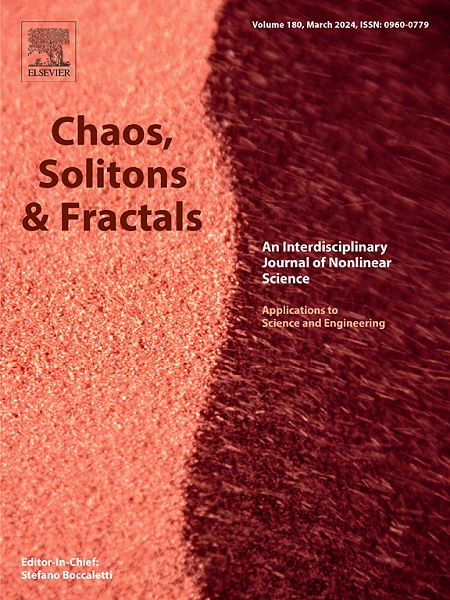基于结构熵的大规模网络影响节点识别方法
IF 5.3
1区 数学
Q1 MATHEMATICS, INTERDISCIPLINARY APPLICATIONS
引用次数: 0
摘要
在大规模网络中识别有影响的节点是网络分析的关键问题。传统的节点识别方法,如基于节点度的方法,主要强调局部邻居,而不考虑节点在网络中的全局重要性。相反,基于全局特征的方法,如中间性中心性(BC),在计算上不利于大规模网络。为了解决这些局限性,我们提出了一种基于结构熵的社区级节点影响计算方法。这种方法结合了社区内的地方意义和跨社区的全球影响。该方法首先使用社区检测算法将密切相关的节点聚类到社区中。随后,通过分析节点离开其社区并融入相邻社区所导致的结构熵变化,对节点的影响进行量化。在11个真实网络上的实验评估表明,与BC和其他传统方法相比,我们的方法将影响节点识别的计算时间减少了76倍。此外,在包含70,000个节点的网络中,我们的方法相对于LE方法将网络效率提高了20%,强调了其效率和有效性。本文章由计算机程序翻译,如有差异,请以英文原文为准。
Effective and efficient identifying influential nodes in large scale networks by structural entropy
Identifying influential nodes in large-scale networks is a pivotal challenge in network analysis. Traditional node identification methods, such as those based on node degree, primarily emphasize local neighbors without considering a node’s global importance within the network. Conversely, global feature-based methods like betweenness centrality (BC) are computationally prohibitive for large-scale networks. To address these limitations, we propose a novel community-level node influence calculation method grounded in structural entropy. This approach integrates both local significance within a community and global influence across communities. The method begins by employing community detection algorithms to cluster closely related nodes into communities. Subsequently, node influence is quantified by analyzing changes in structural entropy resulting from a node’s departure from its community and its integration into an adjacent community. Experimental evaluations on eleven real-world networks demonstrate that our method reduces the computational time for influential node identification by a factor of 76 compared to BC and other conventional approaches. Furthermore, in a network comprising seventy thousand nodes, our method enhances network efficiency by 20% relative to the LE method, underscoring its efficiency and effectiveness.
求助全文
通过发布文献求助,成功后即可免费获取论文全文。
去求助
来源期刊

Chaos Solitons & Fractals
物理-数学跨学科应用
CiteScore
13.20
自引率
10.30%
发文量
1087
审稿时长
9 months
期刊介绍:
Chaos, Solitons & Fractals strives to establish itself as a premier journal in the interdisciplinary realm of Nonlinear Science, Non-equilibrium, and Complex Phenomena. It welcomes submissions covering a broad spectrum of topics within this field, including dynamics, non-equilibrium processes in physics, chemistry, and geophysics, complex matter and networks, mathematical models, computational biology, applications to quantum and mesoscopic phenomena, fluctuations and random processes, self-organization, and social phenomena.
 求助内容:
求助内容: 应助结果提醒方式:
应助结果提醒方式:


